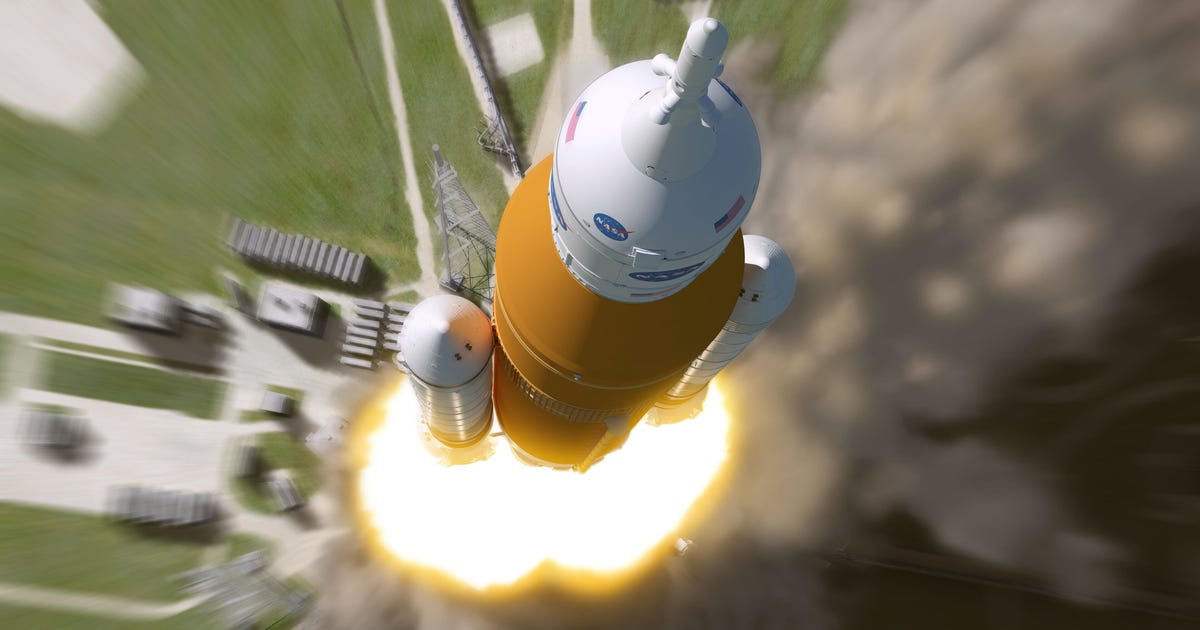
The Artemis I equipment is tucked inside the Vehicle Assembly Building (VAB) at NASA’s Kennedy Space Center in Florida. The structure to the right is the mobile launcher for the mission.
NASA/Kim ShiflettEvery big new space mission is an exercise in optimism as targeted launch times come and go. On Wednesday, NASA announced another delay for its Artemis I moon mission, an uncrewed test of the honking huge Space Launch System rocket and Orion capsule. The agency is now eyeing possible launch opportunities in April and May.
The latest delay comes after a minor technical glitch already put the kibosh on a hoped-for February launch that was already pushed back from a late 2021 launch. None of this is surprising. Space missions, especially ones with new hardware, are notorious for delays.
SLS and Orion are all stacked together and hanging out inside the cavernous Vehicle Assembly Building (VAB) at NASA’s Kennedy Space Center in Florida. The Artemis teams are now aiming to move Artemis I out of the VAB no earlier than March.
“NASA has added additional time to complete closeout activities inside the VAB prior to rolling the integrated rocket and spacecraft out for the first time,” the space agency said in a statement. “While the teams are not working any major issues, engineers continue work associated with final closeout tasks and flight termination system testing ahead of the wet dress rehearsal.”
The wet dress rehearsal (which involves loading propellent into the rocket) will need to be completed before NASA sets a firmer targeted launch date.
NASA aired a media teleconference with an Artemis I update on Wednesday. The agency emphasized that SLS is a large rocket and the team is taking care to be meticulous with testing and preparation prior to rollout.
While there won’t be any people on board Artemis I, the mission will travel around the moon and set the tone for NASA’s ambitious plans to return humans to our lunar neighbor. That’s worth taking some extra time to get it right.


